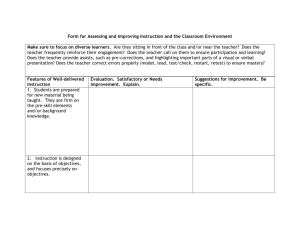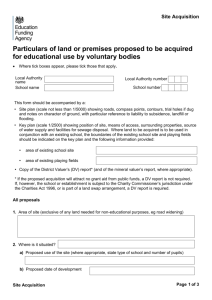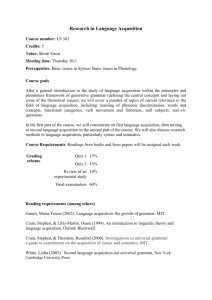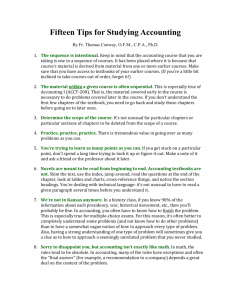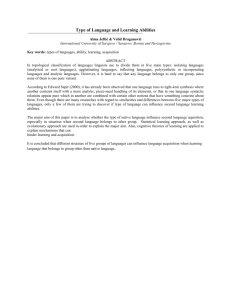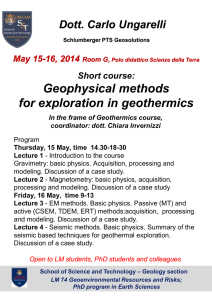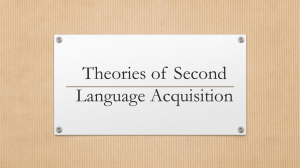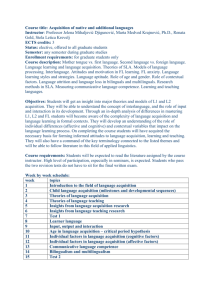Assessing and Improving Curriculum Materials [Lesson
advertisement
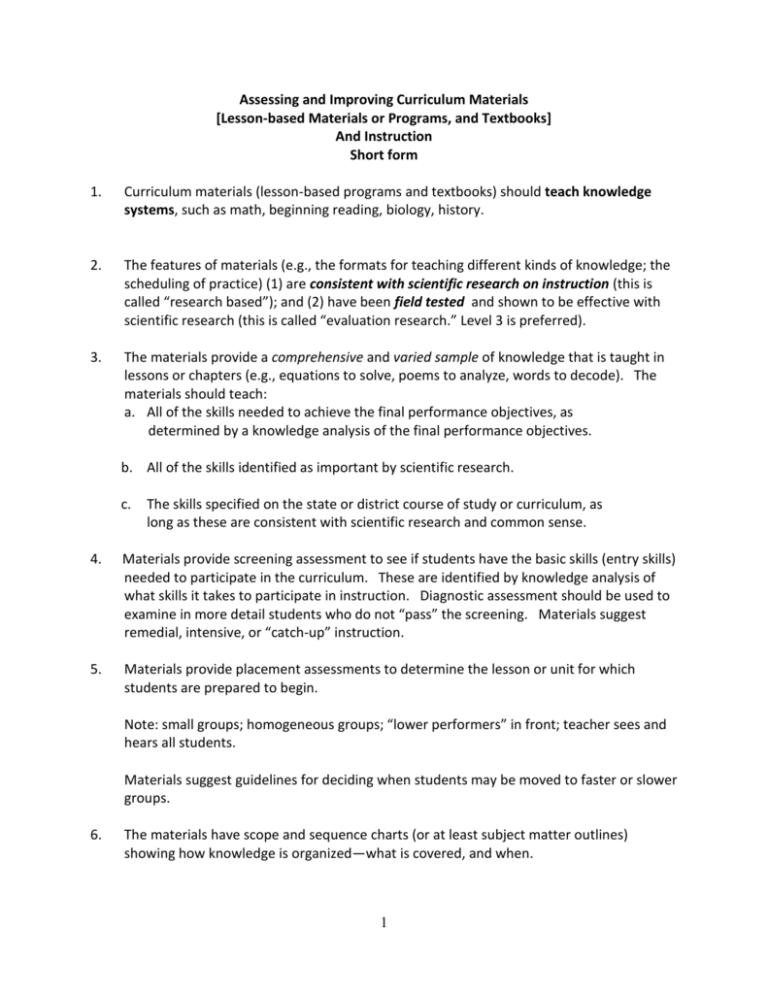
Assessing and Improving Curriculum Materials [Lesson-based Materials or Programs, and Textbooks] And Instruction Short form 1. Curriculum materials (lesson-based programs and textbooks) should teach knowledge systems, such as math, beginning reading, biology, history. 2. The features of materials (e.g., the formats for teaching different kinds of knowledge; the scheduling of practice) (1) are consistent with scientific research on instruction (this is called “research based”); and (2) have been field tested and shown to be effective with scientific research (this is called “evaluation research.” Level 3 is preferred). 3. The materials provide a comprehensive and varied sample of knowledge that is taught in lessons or chapters (e.g., equations to solve, poems to analyze, words to decode). The materials should teach: a. All of the skills needed to achieve the final performance objectives, as determined by a knowledge analysis of the final performance objectives. b. All of the skills identified as important by scientific research. c. The skills specified on the state or district course of study or curriculum, as long as these are consistent with scientific research and common sense. 4. Materials provide screening assessment to see if students have the basic skills (entry skills) needed to participate in the curriculum. These are identified by knowledge analysis of what skills it takes to participate in instruction. Diagnostic assessment should be used to examine in more detail students who do not “pass” the screening. Materials suggest remedial, intensive, or “catch-up” instruction. 5. Materials provide placement assessments to determine the lesson or unit for which students are prepared to begin. Note: small groups; homogeneous groups; “lower performers” in front; teacher sees and hears all students. Materials suggest guidelines for deciding when students may be moved to faster or slower groups. 6. The materials have scope and sequence charts (or at least subject matter outlines) showing how knowledge is organized—what is covered, and when. 1 7. The materials, lessons, units (sequences of lessons), or textbook chapters state and focus instruction on specific objectives— what students will do. a. Objectives should state what students will do? They should not speak of know, appreciate, demonstrate, or understand. b. Objectives should state performance standards---the degree of accuracy and completeness, and the speed expected. For example, how many words read correctly per minute. 8. Materials teach knowledge items in a logical sequence. Knowledge elements or parts (pre-skills) are taught early and continually before teaching more complex knowledge items that consist of or that require knowledge of the elements. 9. The lessons (math, writing, spelling, reading, or foreign language programs) or chapters (history or science textbooks) are a series of smaller, knowledge-rich units (chunks), such as tasks, exercises, or paragraphs. Each chunk serves a clear instructional function. Ask, “What is THIS section supposed to do? It should: a. Teach something new (facts, concepts, rules, cognitive routines). [acquisition] b. Summarize. c. Build fluency. d. Review and probes/tests (retention). e. Expand---add more to existing facts, examples, concepts. f. Generalize knowledge to new examples. g. Strategically integrate---combine information into a larger whole, such as an explanatory essay, or a research project. 10. Materials (either lesson-based programs or textbooks) teach new knowledge (acquisition phase) in a systematic and explicit (focused) way. Here is what you want to see. a. A lesson begins with reviewing, firming, and if needed reteaching prior knowledge, or pre-skills. b. Regarding new knowledge (acquisition phase), the teacher: (1) Uses the format that is proper for the kind of knowledge being taught---fact, sensory concept, higher-order concept, rule, routine. 2 (2) The teaching format involves: (a) Gaining attention. “Show me ready.” (b) Framing instruction. “Now you’ll learn how to sound out words.” (c) Modeling a small amount of information---that is, an example from the acquisition set. “My turn….” (d) Having students do the model with the teacher (lead). “Sound out this word with me.” (e) Having students perform the modeled behavior independently (test/check). “Your turn.” (f) Verifying correct responses. “Yes, you said it fast” (g) Correcting errors: Model---Lead (?)---Test----Back-up----Restart---Retest later. (h) Giving more examples with model—lead—test—verification. (i) Giving a delayed acquisition test of all examples in the acquisition set. (j) Going on to the next part of the lesson, firming weak elements, or reteaching. Note: (a) Wording is: simple, consistent, and focused on the objective. (b) Examples clearly show the important features of a fact, concept, rule, or routine. (c) Examples have a range of defining features; e.g., from light blue to dark blue) and irrelevant features (blue square, rectangle, triangle, circle, sphere, cube). (d) Examples (blue square) and nonexamples (red square) are juxtaposed to show relevant (blue vs. red) and irrelevant (shape) features. (e) Complex routines are taught with a sequence of formats (teaching procedures). These formats begin with more scaffolding and teacher direction, and gradually teach students to do the task independently. c. Lessons end with review and firm (or reteach) what was just taught. Students do not go on to the next lesson until they are firm. 11. Materials adequately cover (teach, assess) all phases of mastery: acquisition (see #8), fluency, generalization, retention. For each phase, there are stated objectives, instructional procedures, assessment of progress, and suggested remediation (if there is too little progress) based on assessment data. 3 12. Materials provide scaffolding; i.e., various kinds of assistance to help teachers communicate information, and to help students acquire, organize, retrieve, and apply information/knowledge. Examples are stated objectives, highlighting, reminders and hints, wait time, big ideas, advance organizers (lesson and unit outlines, guided notes, concept/proposition maps), summaries, glossaries. 13. Materials provide periodic curriculum-based progress monitoring assessments (“mastery tests,” “checkouts) that assess acquisition and retention, generalization, and fluency. Materials also provide guidelines for deciding when students’ performance on assessment means that they (1) are firm and can move ahead; (2) need firming on certain knowledge; (3) need reteaching; or (4) need intensive instruction. Materials also provide plans and procedures for such remediation. 4
